- Recent Updates
- Colpoy's Bay
- Colpoy's Bay Introduction
- Spragge's Hill
- The Kalbfleisch House
- The Kalbfleisch Dock
- The Kalbfleisch Marina
- Whicher's Sawmill
- The Wrecks Near Whicher's Mill
- Frame's Falls and John Wood's Grist Mill
- Albemarle Street
- Hughenden and Whicher's Store
- The Community Hall
- The Forest Home Hotel
- The Colpoy's Bay Schoolhouse
- The Colpoy's Bay Church
- Edgehill Cemetery
- Colpoy's Bay From the Air
- A Glimpse of the Past
- Wiarton
- Berford Street
- Berford St. Part 2
- Berford St. Part 3
- Wiarton Harbour
- Bluewater Beach
- Caframo Ltd. and Wiarton Cement Works
- Wiarton Beet Sugar Factory
- Wiarton's Hotels
- Wiarton's Schools
- Wiarton's Banks
- Grand Trunk Railway Station
- The Wiarton Fish House
- The Wiarton Fish Hatchery
- Wiarton's Berford Theatre
- The Wiarton Woolen Mills
- Wiarton's Furniture Industry
- Wiarton's Hospital
- Wiarton's War Memorial
- Wiarton's Town Hall
- Wiarton's Newspapers
- Wiarton's Grist & Flour Mills
- Wiarton's Sawmill Industry
- Wiarton's Gateway
- Connecting Passages
(Links) - Present-day Map
of Colpoy's Bay - Colpoy's Bay
Lot Map (1870) 
Wiarton Timeline- Present-day Map
of Wiarton - Bibliography
- About the Author
- Site Map
(use if menu doesn't work) - Tell me your impressions!
The Berford Theatre
Moving pictures, or movies as they are known today, were one of the key techonological inventions of the late Victorian era (along with, for example, the phonograph and the electric light bulb). Frenchman Louis Lumière is largely credited with inventing the first popular film projector in 1895. However, Wiarton's first experiece with moving pictures came in the form of Thomas Edison's Kinetoscope, a wooden cabinet through which one person at a time could view short films through a lens in the top. First exhibited in Brooklyn, New York in May of 1893, the Kinetoscope made its way to Wiarton several times in the late 1890s as part of a travelling demonstration of the new technology, pairing it with the music of a Phonograph (a machine to play sound from cylindrical discs, akin to today's [or yesterday's?] record player).
It was not until March of 1908 that Wiarton had its first permanent, regular moving picture showings, established by a Mr. Gellman and partners in a building a little south of the Arlington hotel. For only 10 cents per adult and 5 cents per child, Wiartonians could attend a nightly showing from 7:30pm to 11pm at the Wiarton Theatorium (see Figure W14A). The first advertised showing was an American film entitled "Cast Up By the Sea" (1907) followed the next week by two French films "The Struggle for Life" (1907) and "Life of Moses" (1905) along with another American production "The Indian's Friendship" (1907). Each film ranged from 10 to 15 minutes in length with intermissions consisting of live singing, dancing or vaudeville. The film selection was changed each Monday, Wednesday and Friday and a matinee was available on Saturday afternoons from 2:30pm to 5pm.
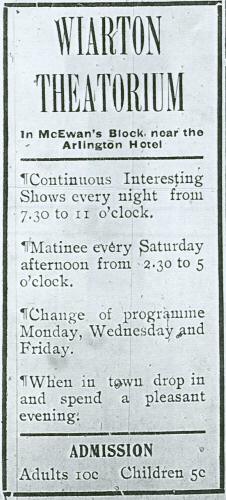
Figure W14A: Advertisement in the Wiarton Echo for the new Wiarton Theatorium (April 2, 1908).
In the midst of an economic downturn, Wiartonians flocked to the Wiarton Theatorium, forgetting their troubles, lost in the flickering images of early silent films. However, drama was also playing out behind the scenes. After less than two months, Mr. Gellman left his partners at the Wiarton Theatorium over a disagreement. He immediately asked town council to rent the Town Hall for his own movie showings. Having already purchased the necessary equipment, Gellman wasted no time, opening Wiarton's second moving picture establishment to a crowd of 700 people on May 9, 1908. Before the end of the month, however, Gellman moved operations northward, across from the Arlington Hotel, to avoid the $3 per day rental fee at the Town Hall. In the end, the original Theatorium folded in early June amidst a swirl of controversy. The remaining owners left town owing a heap of debt for things such as signs, electricity, legal advice, printing costs, etc. With these finances, they couldn't compete against Mr. Gellman who had cut his fare in half to 5 cents.
It appears that in the following months, local businessman William Ashcroft took, for a short time, part ownership of the remaining theatre which was renamed the Palace Theatre. After selling out his share, Ashcroft erected a plain, purpose-built theatre on the west side of Berford Street, half way between the intersections with Boyd and William Streets. The new theatre opened its doors in late September of 1910 under the name Wonderland. Although I have found no definitive proof, I suspect that the Palace theatre shut down around this time. Amidst continuing battles with the Town council over the safety and appearance of the building, Ashcroft ran the theatre, until August 1918 at which point it fell under new management. Figure W14B, below, shows the first ad run after Ashcroft's departure.
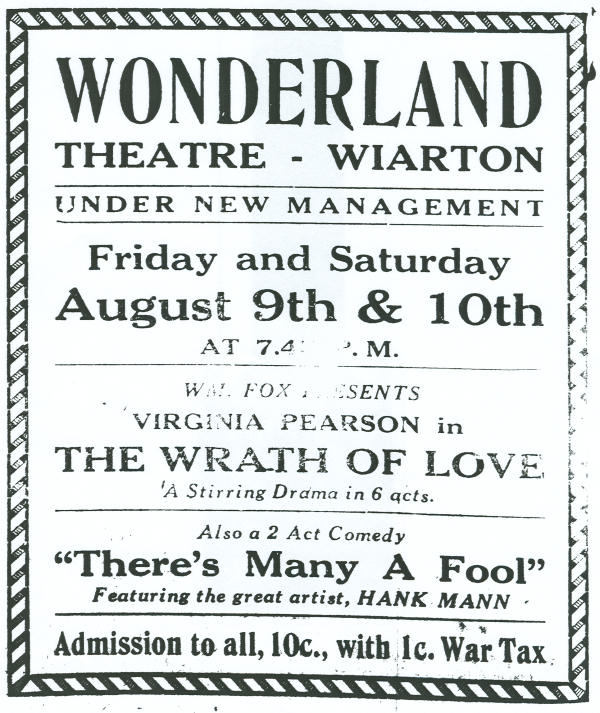
Figure W14B: Advertisement in the Wiarton Echo for the Wonderland Theatre under new management (August 7, 1918).
The theatre changed ownership again in in September of 1924, when its name was changed from the Wonderland Theatre to the Regent Theatre. At that time, some improvements were made to the facilities, including the construction of a women's washroom. Figure W14C below shows the first ad run in the Wiarton Echo for the new Regent Theatre.
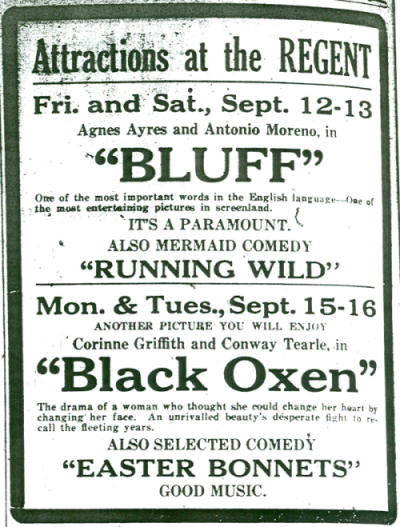
Figure W14C: The first advertisement in the Wiarton Echo for the newly renamed Regent Theatre. (c.1924)
As the years passed, several factors emerged to bring hard times upon the Regent. Wiarton's demand for movies supported only two nights of showings per week, making it difficult for the theatre to remain profitable. By 1930, the soaring popularity of automobiles made the 30 kilometer trip to Owen Sound's new "talkie" theatre (films with sound) a more feasible option. Moreover, the national economy had entered the Great Economic Depression, making luxury items such as movies less affordable to many people. The Regent's manager closed up shop that year and left town.
By September, however, a man named Major Whetton reopened the theatre let it be known in the Echo newspaper that the level of patronage must be sufficient to make the theatre profitable or it would close again in short order. Consequently, Wiarton's movie house continued on for a few more years under the new name of the Irene Theatre. As Figure W14D illustrates,the enterprise did not start off on the right foot. The projection machinery broke down on opening night!
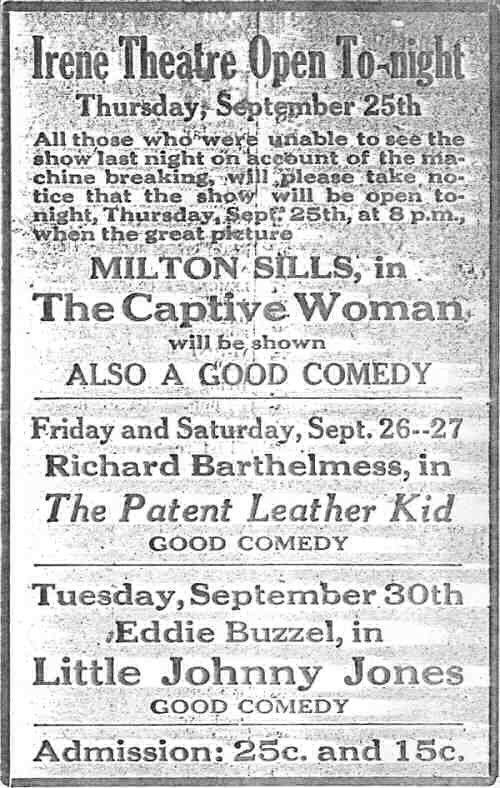
Figure W14D: The debut advertisement for the newly renamed Irene Theatre. (c. September 25, 1930)
In August of 1934, the theatre was taken over by a Mr. Lush and completely remodelled inside and out. On the exterior, the modest building was given a very distinct and unique Spanish, art-deco design. On the interior, the theater was outfitted with a state-of-the art sound reproduction system, giving Wiarton its first "talkies". In fact, the RCA Victor sound system was the first of its kind in Canada, giving Wiarton the same high quality sound as was used in Radio City Music Hall in New York City. Upon its renovation, the newly named Berford Theatre could seat 350 patrons and boasted totally "fire-proof" construction. The theatre opened to the public on September 21, 1934 with an official opening following on October 4th. Figure W14E shows the newspaper announcement of the Berford's official opening by then mayor Rolph Hunter.
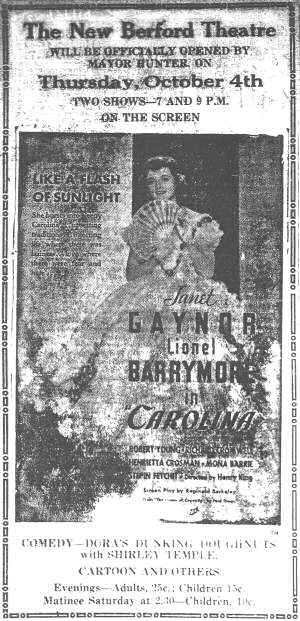
Figure W14E: Official opening announcement for the Berford Theatre. (Wiarton Echo, September 27, 1934)
Mr. Lush operated his renewed theatre for six years until Sam and Lorenza (Florence) Merlina took over the operation. Figure W14F shows Mr. Lush's Spanish-style facade, entrance and interior during the Merlinas' ownership in 1943.
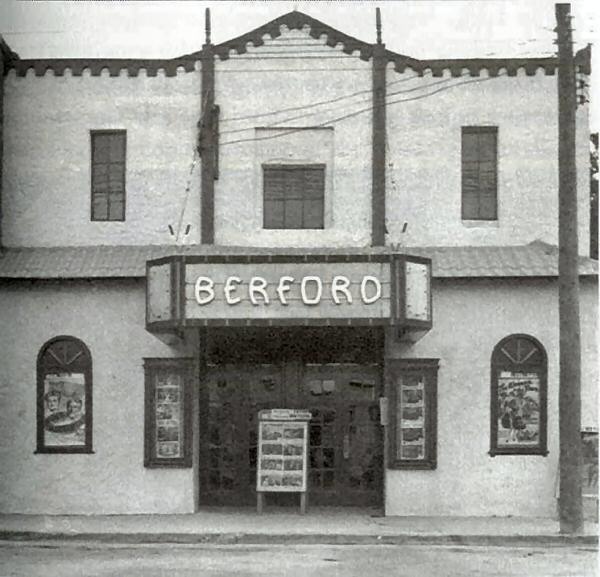
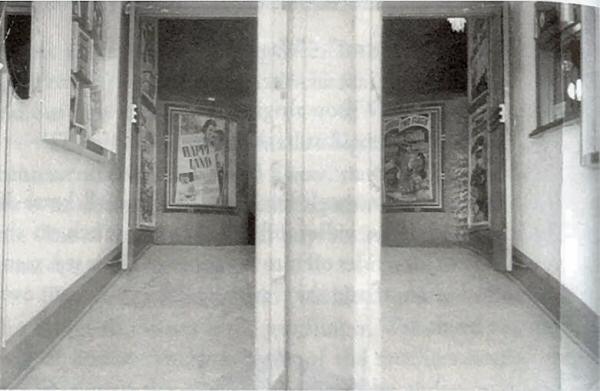
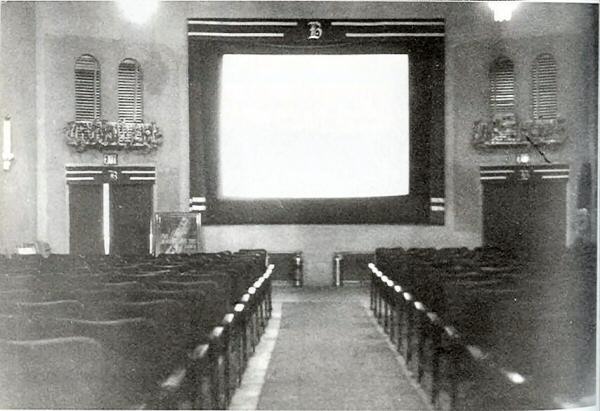
Figure W14F: Berford Theatre facade, entrance and interior. (c.1943, courtesy of Sally Merlina – Vickers)
In 1948, the Merlinas gave the Berford Theatre a significant upgrade. A snack bar was added and technological upgrades included modern projectors and improved "Voice of the Theatre" sound. The Spanish accents were also removed to give the theatre a more modern streamlined look. On the interior, this meant a paintjob with clean lines while the centre aisle was replaced by additional upgraded chairs to increase the capacity from 350 to 414. A new larger screen with a wider aspect ratio was also installed five years later. On the exterior, the 1948 renovations gave the theatre theatre stainless-steel accents with accompanying blue/black vitrolite glass. Figure W14G shows both an interior and exterior view of the theatre following the 1948 renovations. (Note the advertisement in the upper image for the new wide screen added about 1954.)
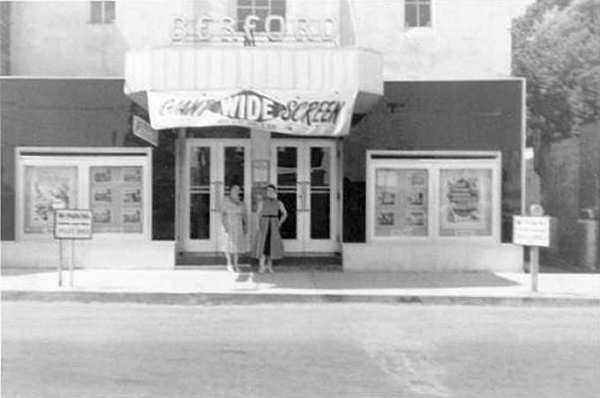
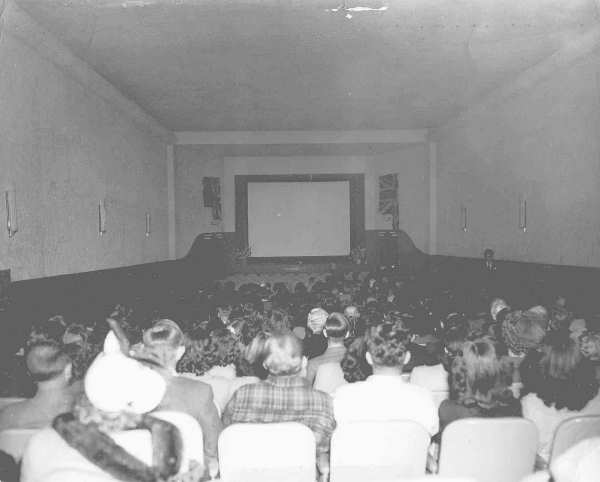
Figure W14G: Berford Theatre following the 1948 renovations. (c.1954 and 1948, courtesy of Sally Merlina – Vickers)
Following Sam Merlina's death in 1957, his daughter Sally and her husband Murray Johnston took the reigns of the Berford Theatre. Eight years later, in 1965 the theatre underwent a dramatic exterior facelift in the styles of the 1960s (see Figure W14H). All across North America, these years marked the beginning of the end for many of the ornately designed grand theatres of the early days of film.
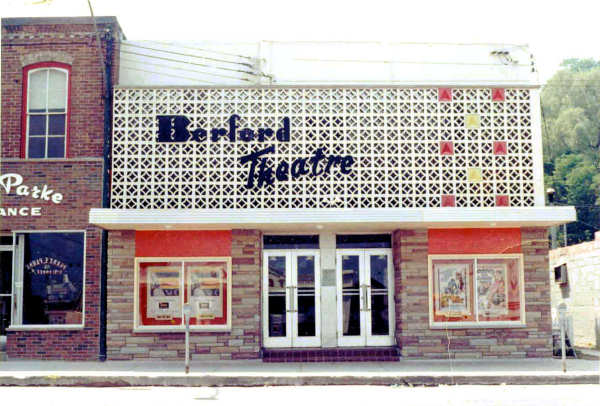
Figure W14H: The Berford Theatre in 1965. (Courtesy of Sally Merlina – Vickers)
The Merlina family ran the theatre successfully until 1969 when they leased the business to a man named John Greene. Mr. Greene gave Wiarton it's movies until 1975 when, after 35 years of continuous ownership, the Merlina's sold the theatre to its final operator, Frank Lenz, who also ran the Embassy Tavern restaurant next door to the north. At one point Mr. Lenz actually integrated the bar of his tavern into the theatre by breaking down a section of wall and building an enclosed room covering over half the rear portion of the theatre. The room was meant to allow bar patrons to have a drink and watch the movie simultaneously through a glass wall. However, approval was denied Mr. Lenz by the provincial government so the room remained an solid-walled box intruding upon the interior of the classic theatre (see Figure W14I).
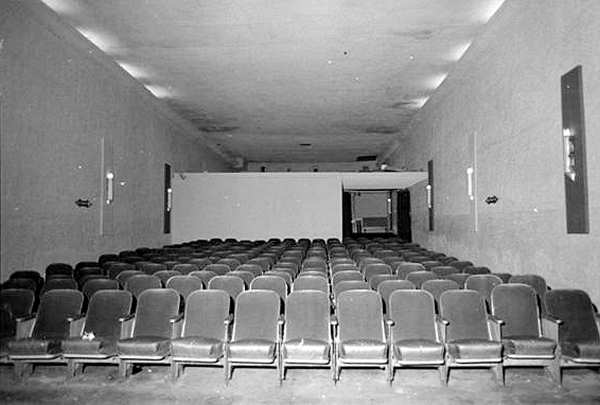
Figure W14I: The rear enclosure meant to allow next-door's bar patrons to view movies at the Berford Theatre. (c. 1978, Courtesy of Sam Johnston)
Beginning of the 1980s, the process of moviegoing changed. On the one hand, major Hollywood movies were distributed under a contract that the film would be given a specific minimum run of so many showings a day for a certain number of days. On the other hand, Canadians were demanding more choice in their moving-going experience. These two factors together led to the development of the "cineplex". Most old theatres had their large screening rooms divided up into two or three smaller rooms so that a greater variety of films could be shown on any one night. Add to this the fact that North American "car culture" made it more popular to travel a short time to larger cities that featured theatres with more screens and more movies. In the face of this competition, unable to accomodate more than once sizeable screen or give one movie a monopoly over its screen for weeks at a time, the Berford Theatre closed its doors in 1982. Mr. Lenz found it impossible to operate the theatre profitably, so it was finally sold in 1988 to the Grey-Fair furniture and Carpet store (612 Berford St.).
The end came on Halloween day of 1990 when the Berford Theatre was demolished, eighty years after the building first welcomed excited moviegoers. Figure W14J gives a view of that fateful day, from the perspective of someone standing where so many generations of Wiartonians were entertained over the years, looking out the front windows of the theatre for the last time...the front doors locked to bar visitors that will never come.
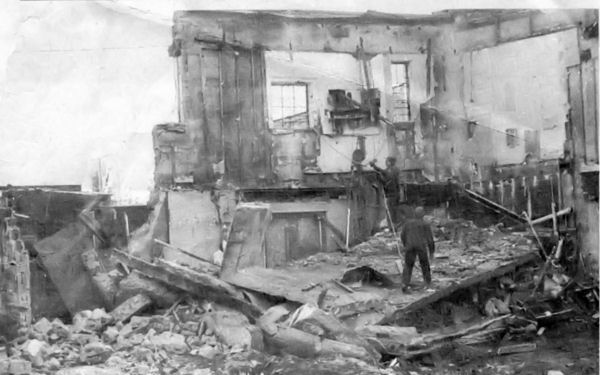
Figure W14J: Demolition of the Berford Theatre. (c. 1990, Courtesy of Sally Merlina – Vickers)
At the time, it was said the building was taken down to make way for a new business block, but the former site of the Berford Theatre remained an empty grassy lot for 18 years. As shown in the middle image of Figure W14K, construction began on the former theatre site in August 2008 (with debris from the old building still visible in the disturbed soil). A dentist office now stands in the former location of the Berford Theatre (bottom image of Figure W14K).
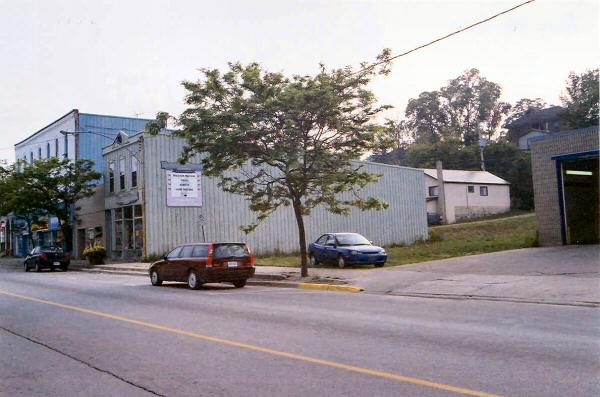
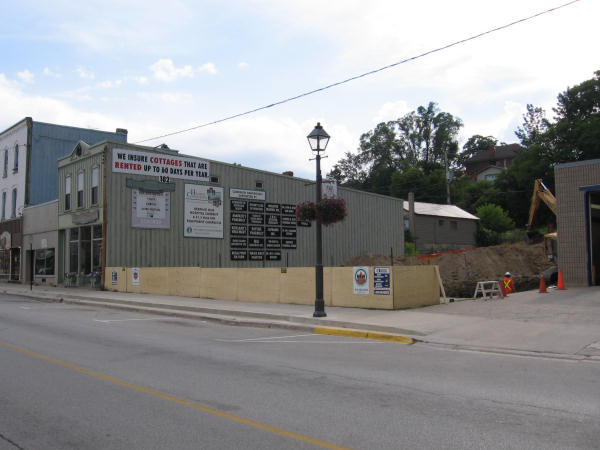
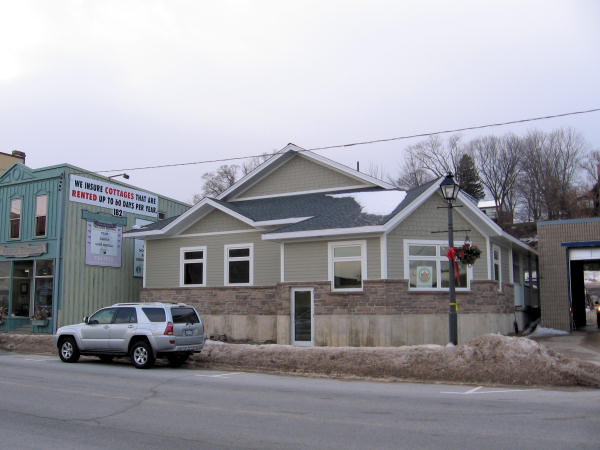
Figure W14K: The former site of the Berford Theatre, 636 Berford St. (c. 2004, Aug. 2008, Dec. 2008)
On a personal note, I have one cherished, although vague, childhood memory of seeing a show at the Berford Theatre. I was six years old and the film was the 1982 re-release of Disney's Peter Pan. Enjoying my first theatrical experience of this Disney classic, as a child I was unaware that the very theatre I was seated in would take in its final patron within a matter of months...thirty years after Peter Pan first debuted on its silver screen.

